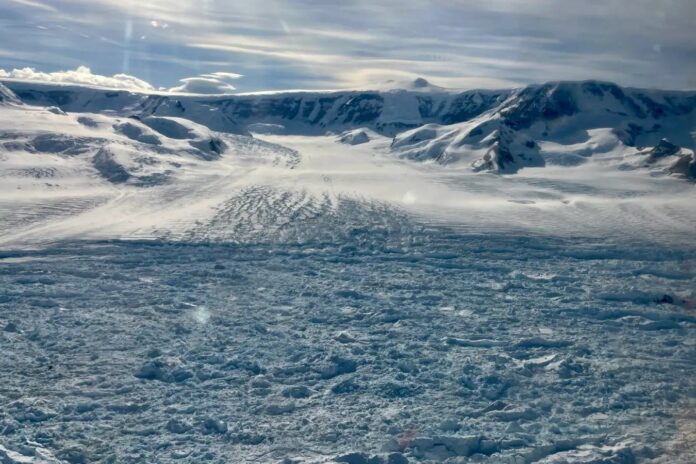An Antarctic glacier is retreating at an unprecedented rate, raising alarms about the stability of other icy giants and their potential impact on global sea levels.
Scientists monitoring Hektoria glacier on the Antarctic Peninsula observed its dramatic shrinking over just 15 months – a retreat that spans 25 kilometers and surpasses previous records by up to tenfold. This rapid collapse stems from a peculiar vulnerability within Hektoria’s structure. Its thinning trunk, where the main ice flow emerges into the ocean, was situated across an area known as an ice plain—a flat expanse of seabed.
This configuration created a chain reaction. As the glacier thinned, its trunk floated free, effectively removing a crucial anchor point that had previously kept it grounded on bedrock. Once untethered, buoyant forces ripped away massive chunks of ice, creating what researchers call “glacial earthquakes” – tremors recorded by seismic sensors. This sudden fracturing unleashed an unstoppable surge in iceberg production, causing the glacier to lose a staggering 8 kilometers in length alone between November and December 2022.
Naomi Ochwat, a researcher at the University of Colorado Boulder leading the study, emphasizes the unprecedented nature of this event: “The question is, was Hektoria a unique case – a perfect storm of events that caused this rapid collapse – or is there a recipe for disaster lurking elsewhere in Antarctica?”
Hektoria’s troubles began in early 2022 when a large ice mass detached from the glacier’s front, and its floating tongue disintegrated. This loss of stabilizing sea ice exposed the glacier to increased stress, accelerating both thinning and flow rates. The dramatic shift on the ice plain marked a turning point, however. The previously grounded trunk seemingly thinned so dramatically that it could no longer bear its weight on the seabed.
Controversy Surrounds Explanations
This rapid disintegration has sparked debate within the scientific community. While Ochwat’s team emphasizes the role of buoyancy in Hektoria’s collapse, other researchers contest this interpretation. Frazer Christie from Airbus Defence and Space highlights uncertainty surrounding precise grounding patterns of Hektoria due to limitations in high-accuracy satellite data. Anna Hogg at the University of Leeds argues that her team’s measurements indicate the ice above the claimed ice plain was consistently afloat, ruling out buoyancy as a primary driver for collapse.
Christine Batchelor from Newcastle University echoes this skepticism, stating that if the ice section truly floated as previously debated, the “headline essentially boils down to the much less unusual ‘ice shelf calves icebergs’.”
The Hektoria glacier’s dramatic retreat presents a stark warning sign about the potential vulnerability of Antarctic glaciers, particularly those with similar configurations. While more research is needed to understand the precise mechanisms at play and whether other glaciers face comparable risks, this event underscores the urgency for continued monitoring and investigation into the impacts of climate change on these crucial ice giants.
